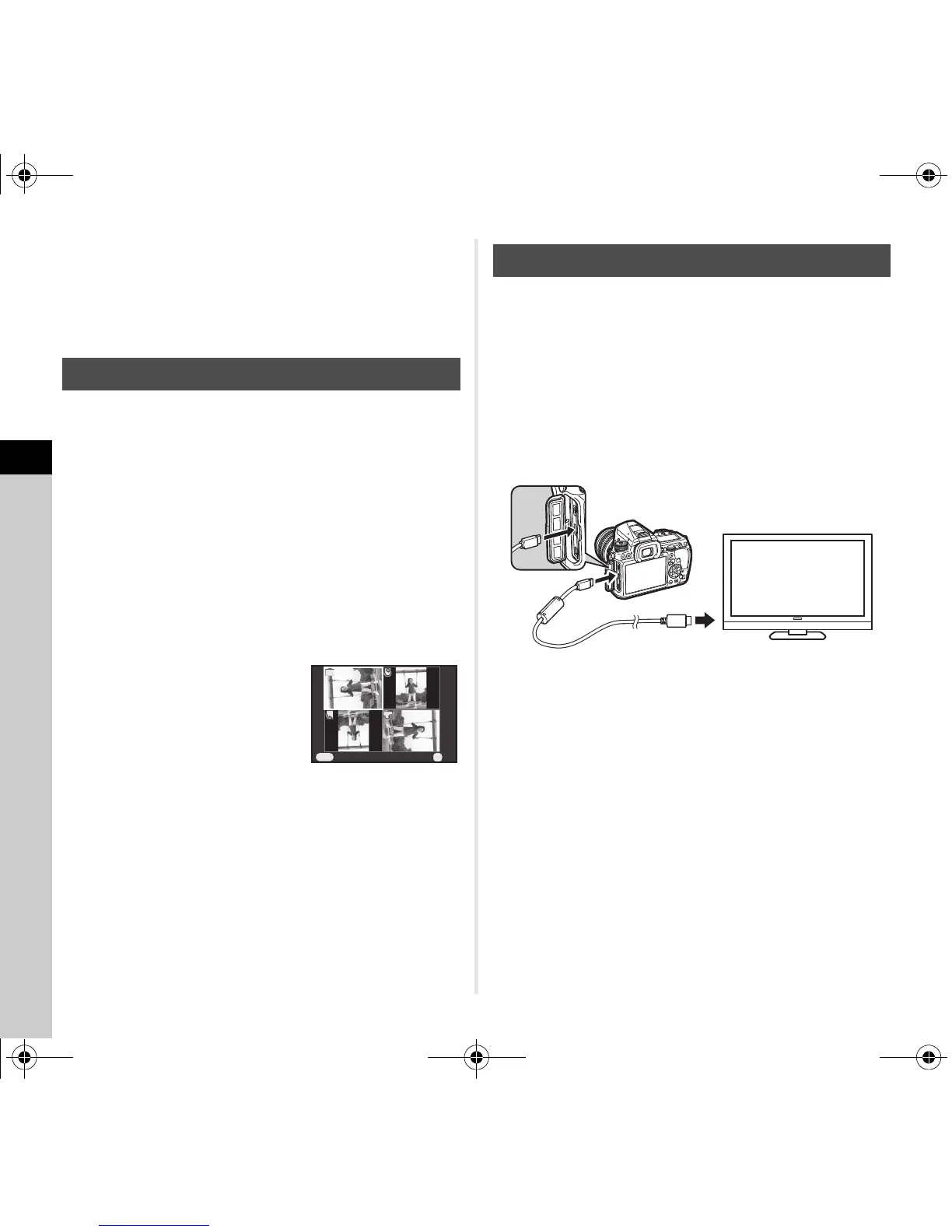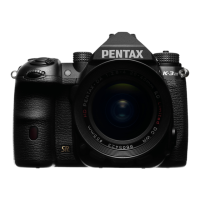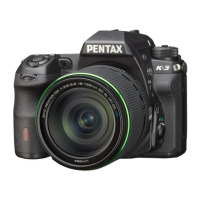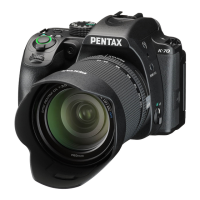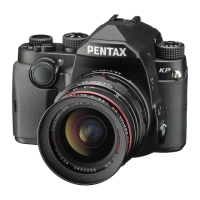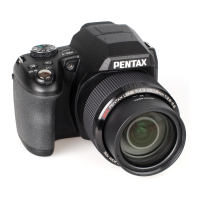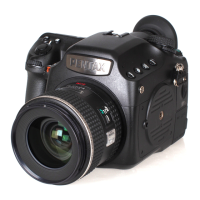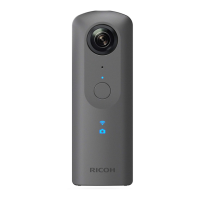4
Playback
70
t Memo
• You can change the [Display Duration], [Screen Effect],
[Repeat Playback], and [Auto Movie Playback] settings for
slideshow in [Slideshow] of the B1 menu. Slideshow can
also be started from the Slideshow setting screen.
When you take pictures with the camera held vertically, image
rotation information is saved when shooting. When [Auto Image
Rotation] in the B1 menu is set to T (On), the image is
automatically rotated based on the rotation information during
playback (default setting).
The rotation information of an image can be changed by
following the procedure below.
1 Display the image to edit in single image display.
2 Select S in the playback mode palette.
The selected image is rotated in 90° increments and the
four thumbnail images are displayed.
3 Use ABCD to select the
desired rotation direction and
press E.
The image rotation information
is saved.
u Caution
• When [22. Save Rotation Info] is set to [Off] in the E4 menu,
image rotation information is not saved when shooting.
• You cannot change image rotation information in the
following cases.
• Protected images
• Images without a rotation information tag
• When [Auto Image Rotation] in the B1 menu is set
to S (Off)
• Movie files cannot be rotated.
Connect to an AV device, such as a TV, equipped with an HDMI
terminal to display Live View images while shooting or to play
back images in playback mode.
Make sure to have a commercially available HDMI cable
equipped with an HDMI terminal (type D).
1 Turn the AV device and camera off.
2 Open the terminal cover of the camera, and connect
the cable to the HDMI terminal.
3 Connect the other end of the cable to the input
terminal on the AV device.
4 Turn the AV device and camera on.
The camera turns on in HDMI mode, and the camera
information is displayed on the screen of the connected
AV device.
u Caution
• While the camera is connected to an AV device, nothing
is displayed on the camera monitor. Also, you cannot adjust
the sound volume on the camera. Adjust the volume on the
AV device.
Displaying Rotated Images

